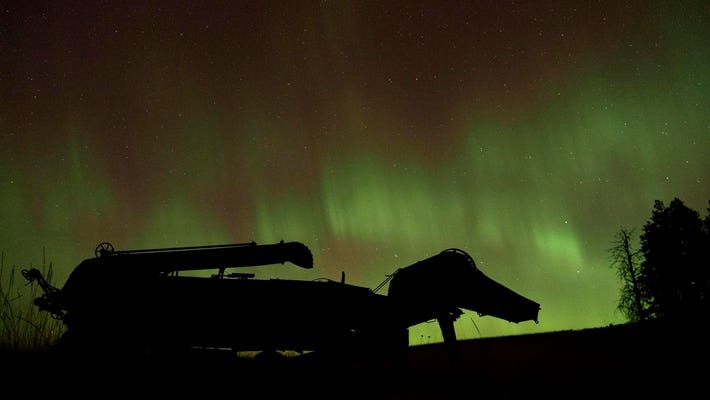Northern Lights Alert: Aurora Borealis May Be Visible Across Northern U.S. States
A celestial show is on the horizon as the National Oceanic and Atmospheric Administration (NOAA) forecasts that the northern lights may be visible across several northern U.S. states from Sunday night into early Monday morning. This rare opportunity for northern lights visibility in lower latitudes comes as a result of a geomagnetic storm, which NOAA predicts could bring an aurora display far south of its usual Arctic region.
The northern lights, or aurora borealis, are typically visible in higher-latitude areas like Alaska, Canada, and northern Europe. However, strong solar activity occasionally allows them to be seen farther south. The storm predicted for Sunday night is expected to be strong enough to provide visibility in northern states, potentially including Montana, North Dakota, Minnesota, Wisconsin, and parts of Michigan, New York, and Maine.
NOAA attributes this light show to a coronal mass ejection (CME) from the sun—a significant release of plasma and magnetic energy that can interact with Earth’s magnetic field. When charged particles from the CME enter Earth’s atmosphere, they collide with gas molecules, creating the dazzling colors typical of the aurora borealis.
Best Viewing Tips
To maximize your chance of seeing the northern lights, it’s best to get as far away from city lights as possible. Dark, clear skies offer the best chance for visibility. Weather permitting, the aurora should be visible in areas with minimal cloud cover and little light pollution. For those keen on capturing the aurora, a DSLR camera with long-exposure settings can help you photograph the phenomenon.
Peak viewing times are expected between midnight and dawn on Monday morning, though the lights could be visible as early as Sunday night. The aurora’s colors, often greens and purples, are the result of oxygen and nitrogen atoms reacting to solar particles.
The NOAA advises interested skywatchers to stay updated on the forecast, as geomagnetic storms can vary in intensity. Online tools, like the NOAA Space Weather Prediction Center, provide real-time updates for those hoping to witness this awe-inspiring event.
If you’re in the northern U.S., be ready to look up Sunday night—the northern lights may just give you an unforgettable show



